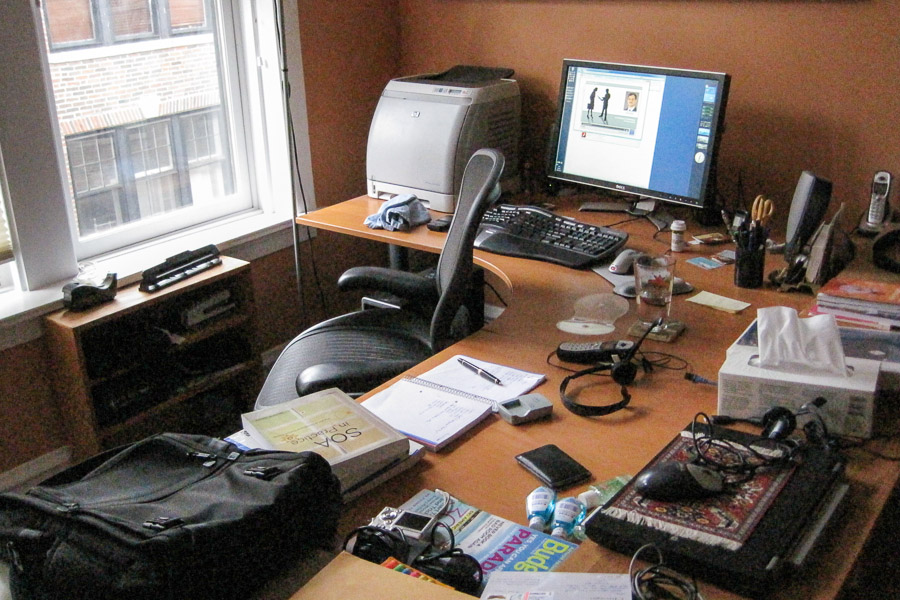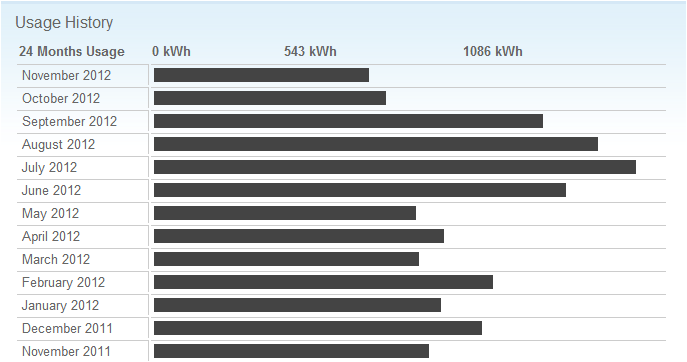Microsoft veteran Raymond Chen explains:
The 64-bit version of Pinball had a pretty nasty bug where the ball would simply pass through other objects like a ghost. In particular, when you started the game, the ball would be delivered to the launcher, and then it would slowly fall towards the bottom of the screen, through the plunger, and out the bottom of the table.
Games tended to be really short.
Two of us tried to debug the program to figure out what was going on, but given that this was code written several years earlier by an outside company, and that nobody at Microsoft ever understood how the code worked (much less still understood it), and that most of the code was completely uncommented, we simply couldn't figure out why the collision detector was not working.
We had several million lines of code still to port, so we couldn't afford to spend days studying the code trying to figure out what obscure floating point rounding error was causing collision detection to fail. We just made the executive decision right there to drop Pinball from the product.
Chen's blog often goes into technical detail that many people might find off-putting, but he's a good person to read if you want to know more about how Microsoft works.
Last night I continued reducing local computing costs by turning off my home desktop PC. The old PC has a ton of space and a lot of applications that my laptop doesn't have, plus a nifty dual-DVI video card. But a couple of things have changed since 2008.
First, my current laptop, a Dell Latitude E6420, has a faster processor, the same amount of RAM, and a solid-state drive, making it about twice as fast as the desktop. Second, Dell has a new, upgraded docking station that will drive two big monitors easily. (Sadly, though the docking station can drive two DVIs, my laptop's video chip can only do one DVI and one VGA.) Third, the laptop uses buttloads less power than the desktop. Fourth, portable terabyte drives are a lot less expensive today than in 2008—and a lot smaller. And finally, I take my laptop to and from work, meaning I have a minor hassle keeping it synchronized with my desktop.
Here's my office about three years ago (January 2010):

A few months later I got a second 24-inch monitor (November 2010 photo):

Notice the printer has moved to make room for the second monitor, but otherwise the setup remains the same. The monitors connect to the desktop under the desk to the left, while the laptop has its own cradle to the right.
Now this afternoon:

The printer has landed on the floor directly under where it used to sit (I print about 3 pages per month, so this isn't the inconvenience it seems), the laptop has moved over to the printer's old spot (and has connected to the monitors), and the old desktop machine sits quietly consuming 225 fewer Watts per hour. I also replaced the 10-year-old, no-longer-functioning 2+1 speaker set with a more compact set. The round thing between the keyboard and the laptop near the center of the photo is a speakerphone that I use with Skype.
I think everyone knows the dog under the desk by now, too. He's not happy that I rearranged his favorite sleeping cave, so I might get a couple of weeks without mounds of dog hair under my desk until he decides the printer is harmless.
So far today I have been unusually productive, whether because of the novelty or because I have a fire-under-the-ass deadline at work. So back to it.
That's what LinkedIn's career expert says:
Back when I started working with LinkedIn, we released our very first ranking of the most overused profile buzzwords. I remember thinking how important it was to steer clear of “extensive experience” (the number one overused term in 2010) if you wanted to shine among the 85 million professionals who were touting their years in the trenches as their defining characteristic.
Well, it’s three years later and with over 100 million MORE professionals on LinkedIn, the stakes to stand out from this year’s very “creative” (this year’s most oft used adjective) crowd are even higher. Here are a few tips for saying what you mean with words that will get you noticed.
LinkedIn lists these as the most buzzy:
- Analytical
- Creative
- Effective
- Experimental
- Motivated
- Multinational
- Responsible
- Specialized
Just try writing a résumé without them...go on...
Yes, another link round-up:
Back to designing software...
10th Magnitude's CTO, Steve Harshbarger, explains how the cloud makes economics better by giving us more options:
We know we could build every feature of a custom application from the ground up. We get ultimate control of the result, but often the cost or timeframe to do so is prohibitive. So as developers, we look to incorporate pre-built components to speed things along. Not only that, we strive for better functionality by incorporating specialized components that others have already invested far more resources in than we ever could for a single application. As a simple example, who would ever write a graphing engine from scratch with so many great ones out there? So, build is rarely the whole story.
What about buy? I think of “buy” not in a strict monetary sense, but as a moniker for code or components that get pulled into the physical boundary of your application. This includes both open source components and commercial products, in the form of source code you pull into your project, or binaries you install and run with your applications’ infrastructure. We all do this all the time.
But the cloud brings a third option to the table: rent. I define this as a service you integrate with via some API, which runs outside your application’s physical boundary. This is where smart developers see an opportunity to shave more time and cost off of projects while maintaining—or even increasing—the quality of functionality.
He also lists our top-10 third-party "rental" services, including Postmark, Pingdom, and Arrow Payments. (I'm using a couple of them as well.)
Stuff sent to Instapaper:
Time to dash out for lunch...then more coding. Gotta finish today.
Over the last two days I've spent almost every working minute redesigning the 10th Magnitude framework and reference application. Not new code, really, just upgrading them to the latest Azure bits and putting them into a NuGet package.
That hasn't left much time for blogging. Or for Words With Friends. And I'm using a lot of Instapaper. Without Instapaper, I'd never get to read Wired editor Mat Honan drawing lessons from his epic hack last summer.
Two Chicago businesses find themselves on the ropes this afternoon, according to the Tribune. The first company, Groupon, has problems many people predicted long before their IPO:
Groupon and its compatriots in the much-hyped daily deals business were supposed to change the very nature of small-business advertising. Instead, it is the daily deal vendors that are racing to change as evidence mounts that their business model is fundamentally flawed.
Critics say the torrid growth that enabled Groupon to go public at $20 a share just a year ago was fueled by merchants buying into a new type of marketing that they didn't fully understand. The discounts offered through the Groupon coupons have turned out to be costly, and the repeat business they generate uncertain.
A Raymond James survey of roughly 115 merchants that used daily deals services during the fall found that 39 percent of merchants said they were not likely to run another Groupon promotion over the next couple of years. The top reasons cited were high commission rate and low rate of repeat customers gained through offering a promotion.
Yeah, no kidding. These flaws have been obvious from Groupon's beginning. I have one outstanding Groupon and one outstanding Living Social deal, and I'm not sure when I'll get to use either. After that, meh.
The other company, Hostess, has hit an unexpected and possibly fatal labor dispute that may force it into out of reorganization and into liquidation:
On Friday, Hostess-employed members of the Bakery, Confectionery, Tobacco Workers and Grain Millers International Union began to strike nationwide, blaming a “horrendous contract” that they claimed could cut wages and benefits up to 32%.
Workers picketed or honored the strike in Sacramento, Los Angeles, Oakland and Seattle and in states such as Ohio, Tennessee, Illinois and Montana. Hostess said in a statement that the walk-offs could lead to layoffs for most of its 18,300-member workforce and a sale of its assets “to the highest bidders.”
“A widespread strike will cause Hostess Brands to liquidate if we are unable to produce or deliver products,” according to the statement. The Irving, Tex.-based company, which was founded in 1930, acknowledged that “the concessions are tough.”
So if you like Twinkies and Ho-Hos, you'd better stock up. (Don't worry; they keep.)
Politico's Burns & Haberman explain:
[ORCA] was described as a mega-app for smartphones that would link the more than 30,000 operatives and volunteers involved in get-out-the-vote efforts. PBS profiled it a few days before the election. The app was created and managed by the Romney campaign and was kept a secret among a close circle in Boston, according to POLITICO sources.
It's been reported the system crashed at 4 p.m., but multiple sources familiar with the war room operation said it had actually been crashing throughout the day. Officials mostly got information about votes either from public news sources tracking data, like CNN.com, or by calling the counties for information, the source said. Officials insisted the day after the election that they had still believed they were close, and that they had hit their numbers where they needed to, even as Fox News and other outlets called the race.
The post links back to a Romney volunteer's description of how ORCA failed in the field:
On one of the last conference calls (I believe it was on Saturday night), they told us that our packets would be arriving shortly. Now, there seemed to be a fair amount of confusion about what they meant by "packet". Some people on Twitter were wondering if that meant a packet in the mail or a pdf or what. Finally, my packet arrived at 4PM on Monday afternoon as an emailed 60 page pdf. Nothing came in the mail. Because I was out most of the day, I only got around to seeing it at around 10PM Monday night. So, I sat down and cursed as I would have to print out 60+ pages of instructions and voter rolls on my home printer. ... They expected 75-80 year old veteran volunteers to print out 60+ pages on their home computers? The night before election day? From what I hear, other people had similar experiences. In fact, many volunteers never received their packets at all.
Now a note about the technology itself. For starters, this was billed as an "app" when it was actually a mobile-optimized website (or "web app"). For days I saw people on Twitter saying they couldn't find the app on the Android Market or iTunes and couldn't download it. Well, that's because it didn't exist. It was a website. This created a ton of confusion. Not to mention that they didn't even "turn it on" until 6AM in the morning, so people couldn't properly familiarize themselves with how it worked on their personal phone beforehand.
The project management antipatterns are apparent: Blowhard Jamboree, Smoke and Mirrors, Throw It Over the Wall, and basic Project Mismanagement, for starters. I haven't seen the code, but I can't imagine the management and deployment problems didn't lead to design and construction problems as well.
We software professionals have learned, through painful experience, that software developers have a better understanding of how to develop software than corporate executives. Go figure. Since Mitt Romney ran as a father-knows-best, authoritarian candidate, it should surprise no one that the people he hired couldn't run a software project.
Last month I used less electricity than ever before at my current address, mainly because two of the five servers in the Inner Drive Technology Worldwide Data Center have had their duties migrated to Microsoft Windows Azure.
This past month, I used even less:

It wasn't my smallest-ever bill, though, thanks to Exelon's recent rate increases. But still: here's some more concrete evidence that the Cloud can save money.
And before people start pointing to the New York Times article from September about how wasteful the Cloud is, I can't help but point out that the writer left out the part where moving to the cloud lets businesses turn off their own on-premises servers. And given the way Azure works (and, I assume, Amazon's and Google's equivalents), instead of dedicated servers doing just about nothing all day, you have shared servers handling sometimes dozens of different virtual machines for a fraction of the cost.
Anyway, except for the part where I fly 100,000 km every year, I feel like moving to the Cloud is helping everyone.